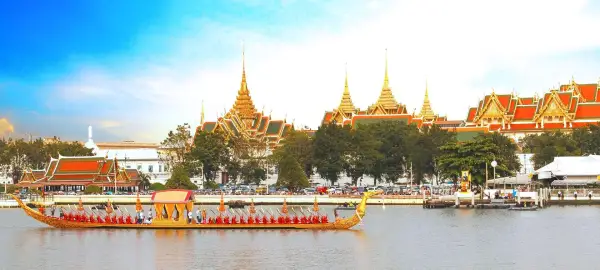Small Group Experiential Travel
Tour Code
SE10
Start
Hanoi (HAN)
End
Bangkok (BKK)
Tour type
Cultural
Max Group Size
18
When To Go
Jan, Nov
Activity Level
2 - Moderate
Overnight in
Phnom Penh, Siem Reap, Bangkok, Chiang Mai, Chiang Rai, Ha Noi, Hoi An, Tam Coc
- Overview
- Info & Inclusions
- Itinerary
- Map & Hotels
- Photos
- Dates & Prices
Highlights
- Venture in Northern Vietnam
- Magical cruise on the untouched part of Lan Ha Bay
- Majestic Angkor Temples, culturally rich Northern Thailand
Description
This is a very dynamic and content-rich treatment of a region we've been touring for over three decades. Vietnam & Cambodia remain some of our favourite destinations worldwide and one of our preeminent multi-country combos in Asia. For this program, we are also very excited to add the cultural/natural/historical allure of Northern Thailand, with its friendly peoples, ancient traditions, natural delights, and spectacular gastronomy.
Price Includes
- Breakfast and dinner daily, some lunches as per the tour itinerary (local restaurants and some hotels)
- All transport (including local flights), accommodation, sightseeing and entrance fees for sites noted as 'visited' in the detailed itinerary.
- Gratuities for drivers, restaurant staff, porters, local guides.
- Airport transfers for land & air customers arriving/departing on tour dates and early arriving land & air customers who book BOTH their air and extra nights through us.
Exclusions
- International airfare to/from the tour.
- Tour Leader gratuities, some lunches, drinks, personal items (phone, laundry, etc), domestic and international (if applicable) air taxes, visa fees, and any excursions referenced as 'optional'.
- Airport transfers for Land Only customers.
- Optional trip cancellation insurance.
- Our post-reservation trip notes offer further guidance on shopping, not included meals, visas, and locally paid departure taxes.
Trip Info
- Seasonality and Weather:
Our departures are set to coincide with the coolest and driest times of year, November to April. That said, however, the entire region experiences a warm-hot tropical climate with humidity, with the exception of northern Vietnam, which can be quite chilly at this time. November/December, after seasonal rains, tends to be greener and more lush. Inland regions can experience heat at any time, especially inland locations such as Siem Reap.
Overall you should prepare for warm, sticky weather with the possibility of rain and some chilly nights/mornings in a few locales. - Transport and Travel Conditions:
Land transport throughout will be by private air-conditioned bus. Most of the driving days are not long, but progress can be slow due to the nature of the roads and traffic. This highlight packed program benefits greatly from the availability of convenient short-haul internal flights that tie this trip together.
Porters are available at hotels but you must be able to manage with your baggage at airports and some smaller hotels.
The tour is not strenuous though it is busy; you must be steady on your feet and be able to endure some heat and some long days. We have numerous walking tours and visit several sites that are LARGE with steps and uneven surfaces. Our level "2" rating for this tour refers to the ambitious itinerary, full travel days, early starts, walking tours, uneven surfaces, and the possibility of heat in some locales
Am I suitable for this tour? Please refer to our self-assessment form - Accommodation:
Hotels used on tour are modern, comfortable, well-located, air-conditioned, mostly 4, some 3-star properties with en suite bath/toilet. Some are resort-style boutique properties with plenty of charm and atmosphere. Single rooms are limited and possibly smaller than twins.
Most hotel rooms are well-equipped and likely include hairdryers and irons, minibar fridge, TV. Most hotels provide complimentary purified drinking water. Some hotels have swimming pools. Our cruise can be considered "luxury" accommodation.
Click on "Map & Hotels" tab elsewhere on this page for more info, including details about our cruise vessels. - Activity Level: 2
These are particularly busy tours that feature a lot of moving around, sometimes by train and short journeys on local transport. Walking tours of towns and cities are leisurely but you should be prepared to be on your feet for several hours. Some of our cultural trips that occur at high altitude and/or require greater independence with baggage handling (at hotels, airports, train stations) also fall into this category.
To learn more about the Activity levels, please visit our tour styles page. - Staff and Support:
Tour Leader throughout, local drivers, local guides at various locations. - Group Size:
Maximum 18 (plus Tour Leader)
Download Itinerary
- Day 1:Arrival in HanoiArrive in Hanoi; transfer to our hotel.
Hanoi, located on the banks of the Red River (Song Hong), is an attractive city with lakes, fine boulevards, flourishing parks, and a public centre that is an architectural museum piece. Rich in history, this is one of the most ancient capitals in the world. Hanoi is like a living museum; a fascinating glimpse into a city of old, yet oozing with the energy and pace of a modern metropolis.
Overnight in Hanoi
Included Meal(s): Dinner - Day 2:Hanoi: City ExplorationToday we enjoy a full day of sightseeing in Hanoi, and as we visit the historic highlights you will witness a capital city packed with tree-lined boulevards, lakes and parks, belle époque villas and beautiful temples.
We will start at the Mausoleum of Ho Chi Minh, a site of pilgrimage and the final resting place of the most iconic and popular leader of Vietnam. The building was constructed from materials gathered from all over Vietnam and is modelled closely on Lenin's Mausoleum. (*From time to time the building is closed to visitors; possibly an outside viewing only).
We continue on to the Ho Chi Minh stilt house. For most of his tenure as President of North Vietnam, Ho Chi Minh lived in this modest stilt house behind the grandiose Presidential Palace. Its construction and decor illustrates the importance of simplicity and modesty to this Vietnamese revolutionary. The building is elegantly crafted with lacquered and polished wood, following the model of a traditional communal house on stilts.
We will also admire the elegance of the One Pillar Pagoda, one of Vietnam’s most iconic temples. Originally built in 1049, the temple is lotus-shaped and is situated in the middle of a water-lily pond.
Our visit to the Ethnology Museum (one of Vietnam's finest) provides us with an insight to the lives of the peoples found primarily in the high country. Dedicated to the 54 ethnic minorities of Vietnam the museum is packed full of information detailing traditional Vietnamese ways of life. Next is the Temple of Literature, the site of the first national university dating back to 1076 and one of Hanoi's best-preserved ancient sites.
Today we finish with the Hoa Lo Prison Museum, known to American prisoners of war as the Hanoi Hilton. This museum was a prison used by the French colonists in Vietnam for political prisoners and later by North Vietnam for prisoners of war during the American/Vietnam War.
Overnight in Hanoi.
Included Meal(s): Breakfast and Dinner - Day 3:Hanoi - Red River Delta & Tam CocThis morning we will drive to Ninh Binh Province through the rural Red River Delta region. This part of Vietnam is often referred to as “Halong Bay on Land.” Song Hong, the Red River, is northern Vietnam’s largest river. The river rises in China’s Yunnan province and flows 1175 km southeast through deep, narrow gorges to enter Vietnam and discharge into the Gulf of Tonkin via a great delta. The silt it carries is rich in iron oxide, making its water red and giving it its name.
After lunch we will enjoy a short drive to Yen Mac. Here we will meet with a local family and learn about the local village activities such as gardening, rice cultivation and production, and local handicraft work. People of the Red River Delta villages are self-sufficient and they grow an abundance of vegetables and fruit in private gardens, overflowing with a variety of crops such as tomatoes, eggplant, spinach, herbs, papaya, longan and jackfruit. We will walk along the narrow village streets to see the local pagoda and the communal house; the relaxed atmosphere here lends well to interaction with local villagers.
We then drive to Hoa Lu, the ancient capital during the Dinh and Le dynasties. We'll visit the local temples and then drive across the Trang An Eco-tourism complex in order to reach the Hang Mua Cave. Here we can climb up the 450 steps to reach the summit for a panoramic view of the surrounding area.
Overnight in Tam Coc.
Included Meal(s): Breakfast and Dinner - Day 4:Tam Coc - Lan Ha Bay Overnight CruiseIn the morning embark on a journey to Lan Ha Bay (an extension of Ha Long Bay); all the while absorbing the incredible beauty of The Red River Delta and colourful rice fields throughout the journey. Lying south and east of Cat Ba Town, Lan Ha Bay is made up of approximately 300 or so karst islands and limestone outcrops. Due to being a fair distance from Halong City, fewer tourist boats venture here, meaning Lan Ha Bay has a more isolated appeal.
We will receive a warm welcome as we arrive at the Dinh Vu port around noon. Here we will board our overnight boat. A mouth-watering lunch will be served as we cruise to Lan Ha Bay.
During our afternoon cruising we will witness the phenomenal and awe-inspiring scenery around Lan Ha Bay. We will explore hidden lagoons and floating villages, and you will have the chance to swim or kayak at the foot of the verdant giant stones. We later drop anchor in an isolated area for the evening and enjoy the peaceful ambience of the bay. Under clear skies, the upper deck offers a great vista from which you can admire the beauty of the Lan Ha sunset.
Overnight on board.
Included Meal(s): Breakfast, Lunch and Dinner - Day 5:Lan Ha Bay - HanoiBefore enjoying breakfast, those who wish to can participate in a Tai Chi class on deck under the rise of the Southeast Asian sun. This morning we will explore an impressive cave engulfed with thousands of stalactites and stalagmites. We slowly cruise back through the majestic karst peeks heading back to the pier.
Around noon we will disembark at Dinh Vu port and drive back to Hanoi. We will arrive in the mid-afternoon and will transfer to our hotel. Later this afternoon we will enjoy a walking tour of Hanoi's Old Quarter, also known as the 'Quarter of 36 Streets'.
This evening we will enjoy a (+/- one hour) water puppet show. This fantastic art form is unique to Vietnam and originates in the Red River Delta area.
Overnight in Hanoi.
Included Meal(s): Breakfast and Dinner - Day 6:Hanoi - Fly to Da Nang - Hoi AnToday we fly to Da Nang and continue by road to Hoi An. Da Nang is situated on a peninsula at the point where the Han River flows into the South China Sea. Our route takes us through the nearby Marble Mountains; a cluster of five limestone peaks with marble outcrops known for their beauty and their caves. At the foot of Marble Mountain one finds an important religious site for the Chams as well as many artisans crafting fine marble objects.
Our destination today is perhaps one of the most charming and atmospheric towns in Vietnam - Hoi An. The ancient town of Hoi An is an exceptionally well-preserved example of a South-East Asian trading port dating from the 15th to the 19th century. The town centre here is small enough to get around easily on foot. On arrival, flight times permitting, we'll have an informal orientation tour of this charming town.
Overnight in Hoi An
Included Meal(s): Breakfast and Dinner - Day 7:Hoi An: Walking Tour & Boat TripToday we will venture out on foot and discover many of the highlights of this UNESCO protected town – including the old- town architecture, Buddhist shrines, French colonial houses, art galleries and old canals. This was once a prominent Vietnamese trading port for porcelain, pepper, silk and cinnamon, and the city offers a true mix of Vietnamese, Japanese, Chinese, and French architectural feats.
The oldest parts of town are teeming with beautifully-restored houses, shops, and temples, offering sightseeing opportunities you won’t find in other cities in Vietnam. One of Vietnam's most iconic attractions, Hoi An's Japanese covered bridge dates back to the 18th century and is a beautiful historical piece of Japanese architecture. On its north side there is a pagoda, Japanese in style, which serves as protection for sailors. The Tran Family Temple has survived for 15 generations, and here we will see the fusion between both the Chinese and Japanese styles.
During our time here today we will visit the Chinese Assembly Hall, the Central Market and we will enjoy a boat trip on the Thu Bon River. This river is still essential to the region more than 500 years after it was first navigated, and it remains essential to local food production and transport.
Overnight in Hoi An.
Included Meal(s): Breakfast and Dinner - Day 8:From Hoi An: My Son Cham Dynasty ComplexThis morning we will visit the UNESCO World Heritage Site of My Son ("mee-sohn"), a large complex of religious relics that comprises more than 70 architectural works from the obscure Cham Dynasty (2nd-15th century). The Chams were "Indianised" during commercial trading relations and adopted Hinduism (which can clearly be seen in the Temple designs). My Son served as an intellectual and religious centre and is a ‘must visit’ as one of Vietnam's most extensive and most important Cham Sites. The forested and lush setting, and general peacefulness of this little visited site make this an excellent excursion.
We later return to Hoi An with the balance of the day free for you to explore at leisure. The Hoi An riverside was a prominent stop amongst foreign traders between the 16th and 18th centuries due to its location on the banks of Thu Bon River, and today this part of the old town is still the most popular gathering spot day and night.
Overnight in Hoi An.
Included Meal(s): Breakfast and Dinner - Day 9:Hoi An - Da Nang, Vietnam - Fly to Siem Reap, CambodiaToday we fly to Siem Reap, the true epicentre of Cambodia and the gateway for the temples of Angkor. Siem Reap was little more than a village when French explorers such as Henri Mouhot "re-discovered" Angkor in the 19th century. Depending on our flight time we may begin our sightseeing program on arrival – TBD.
* NOTE: The order of Siem Reap sightseeing may vary at the discretion of your Tour Leader.
Overnight in Siem Reap
Included Meal(s): Breakfast and Dinner - Day 10:Siem Reap: Rolous Group, Chao Srei Vibol & Angkor WatOur morning adventure begins with a nice walk/hike taking us away from the center of Siem Reap, (tuktuks will be made available for those not wishing to walk). Our trail passes local schools and villages, and crosses rice fields before bringing us to the Roluos temple group. Roluos houses the Khmer civilization’s earliest temples, also known as Hariharalaya. Here we will enjoy a walking tour of the three main temples, each dedicated to the Hindu God Shiva. We then continue to Bakong and then Preah Ko. Many people consider Bakong to be the most impressive member of the Roluos Group, sitting at the center of the first Angkorian capital, Hariharalaya.
This afternoon we hike to Chao Srei Vibol, small charming temple on top of a hill which hardly sees any visitors. Take a walking tour around the central sanctuary, a part which has not been restored and is in a ruined state. A dense forest surrounds the temple and the many trees provide us with a much needed cool shade in the heat of the day. As with some of the other Siem Reap temples further afield, the calm and peacefulness of Chau Srei Vibol and its beautiful surroundings make this a perfect spot to visit.
In the mid-afternoon we will travel by bus to the heart of the Angkor Archaeological Park. Here we will explore the famous and magnificent Angkor Wat temple at a less crowded visiting time. Starting from Ta Kou entrance (East Gate), we will walk to Angkor Wat and stroll around this massive monument, exploring the many galleries with columns, libraries, pavilions, courtyards and ponds full of water reflecting the towering temple.
Overnight in Siem Reap.
Included Meal(s): Breakfast and Dinner - Day 11:Siem Reap: Angkor Archaeological ParkToday we travel to Banteay Srei, also called the “gem” of Angkor. The so-called “Citadel of Women” was built between the 11th and 13th century and remains the best-preserved temple in Cambodia. Located away from the main monuments, Banteay Srei is a true highlight of a visit to Angkor! This temple contains the finest, most intricate carvings to be found in Angkor.
Around midday we will drive the short distance to Kirimanon, a typical village located inside the Angkor Archaeological Park. During our visit we will learn about the customs and culture of these inhabitants of Angkor, and you will have the opportunity to take part in whatever seasonal activity is happening at the time of our visit (rice planting, roof weaving, vegetable harvesting and much more).
Our last visit of the day will be a stop at Angkor Thom, when the whole complex is less crowded . Our touring of the site will include: Bayon temple, Phimeanakas temple within the Royal Palace enclosure, Baphuon temple, the Terrace of the Elephants and the Terrace of the Leper King.
Overnight in Siem Reap.
Included Meal(s): Breakfast and Dinner - Day 12:Siem Reap – Fly to Phnom PenhToday we fly to Phnom Penh, the capital and largest city in Cambodia.
Engineered by the French, Phnom Penh was once filled with beautiful tree-lined streets and colonial mansions. Today many of the old buildings exist, although they are in a severe state of disrepair. Depending on the time of our arrival, we may accomplish some of the sightseeing as described tomorrow, today upon arrival.
Overnight in Phnom Penh.
Included Meal(s): Breakfast and Dinner - Day 13:Phnom Penh: Tuol Sleng Prison & City TourWe begin with a visit to the infamous Tuol Sleng Prison, now a museum illustrating the atrocities committed by Pol Pot during the 1970s, and the nearby Choeung Ek, aka the "Killing Fields." The buildings at Tuol Sleng are preserved as they were left when the Khmer Rouge were driven out in 1979. The regime kept extensive records, including thousands of photographs. Several rooms of the museum are now lined, floor to ceiling, with black and white photographs of some of the estimated 20,000 prisoners who passed through the prison.
Back in town, we visit the National Museum, which houses one of the world's largest collections of Khmer art, including sculpture, ceramics, bronzes, and ethnographic objects. The museum's collection includes over 14,000 items, from prehistoric times to periods before, during, and after the Khmer Empire, which at its height stretched from Thailand, across present-day Cambodia, to southern Vietnam. The Museum buildings, inspired by Khmer temple architecture, were constructed between 1917 and 1924.
We then walk the short distance to the Royal Palace and Silver Pagoda. We also stop in at Wat Phnom, a magnificent temple overlooking the town, said to be the spot whereupon the city was originally founded.
Overnight in Phnom Penh.
Included Meal(s): Breakfast and Dinner - Day 14:Phnom Penh, Cambodia - Fly to Bangkok, ThailandToday we fly to Bangkok. Flight time-permitting we may include some of our city sightseeing program upon arrival – TBD.
Overnight in Bangkok.
Included Meal(s): Breakfast and Dinner - Day 15:Bangkok: City TourThis morning we will visit the Grand Palace situated on the Chao Phraya River. Started in 1782, the complex is a collection of buildings covering over 1.5 sq km (0.9 sq mile). Within the grounds we visit Wat Phra Kaeo, known for the venerated Emerald Buddha. Sitting on a golden altar, it is carved from green jade and is only 75 cm (30 inches) high! Since its discovery in the 15th Century, the Emerald Buddha has known many homes, including Lampang, Chiang Rai and two locations in Laos, Luang Prabang and Vientiane.
We will start our afternoon with a visit to Wat Pho also known as the Temple of the Reclining Buddha. The temple is the largest in Bangkok and it is 200 years old. On its grounds, we will see the tremendous 46m (150 foot) long, 15 m (49 foot) high gold-plated reclining Buddha. The sole of his feet have detailed work of mother-of-pearl. Wat Pho also has more than 1,000 bronze images from Ayutthaya and Sukhothai rescued by Rama I's brother.
We will continue our day by crossing the "khlong" (river) by boat in order to visit Wat Arun, or the Temple of the Dawn. It was built in the early 19th Century and its tower is the highest in Thailand measuring 81m (265 feet). The tower, or "prang," is covered with pieces of Chinese porcelain and its beauty is appreciated from a distance. The temple gained its name from the Indian god of dawn, Aruna. Here there are superb statues of the Buddha at the most important stages of his life: at birth (north), in meditation (east), preaching his first sermon (south) and entering Nirvana (west).
Overnight in Bangkok.
Included Meal(s): Breakfast and Dinner - Day 16:Bangkok - Fly to Chiang MaiToday we fly to Chiang Mai, located in the north of Thailand.
Cosmopolitan Chiang Mai, Thailand’s second city, is regarded by many as its rightful, historic capital. It’s a fascinating and successful mix of old and new, where 1,000-year-old temples and quiet pagoda gardens exist side by side with glittering new hotels and shopping malls.
After settling in, we’ll learn how to cook an authentic Thai meal with a half-day cooking class. A typical cooking class features shopping for ingredients at a local market, then rolling up our sleeves to create a meal of classic Thai dishes. An expert cooking instructor will walk us through each step, and you’ll get to enjoy the meal you’ve prepared at the end of the lesson.
Overnight in Chiang Mai.
Included Meal(s): Breakfast and Dinner - Day 17:Chiang Mai: City TourToday we have a tour of Chiang Mai and the surrounding area.
Chiang Mai has over 300 temples, and its old quarter set within a 2 sq km moat, has retained many of its traditional wooden houses. At the main sanctuary of the Buddhist temple is a tower constructed in 1345 to house the ashes of King Kam Fu and the beautiful Viharn Lai Kam. This wooden structure is a marvellous example of Lanna architecture. Inside the temple there sits one of Thailand's three Phra Singh (or Sihing images). The setting of the image is enhanced by a colourful mural that is action-packed with scenes showing piggyback fights, merchants, fishermen and children playing.
While in Chiang Mai we'll visit the Arts and Cultural Centre.
Overnight in Chiang Mai.
Included Meal(s): Breakfast and Dinner - Day 18:Chiang Mai & Mae Sa ValleyWe have a morning visit to the orchid farm. The road we travel today passes through the narrow valley of the Mae Sa River that tumbles down numerous cascades. The natural beauty of the area and closeness to the city has attracted orchid farms and resorts with impressive gardens.
As the national animal of Thailand, the elephant has a special place in Thai lore. Elephants were once numerous, ranging over extensive forest habitats that covered much of Northern Thailand till the middle of this century. In former times, the animals were the equivalent of a battle tank, an off-road vehicle and a ten-wheel truck. The symbol of kingship since ancient times, a white elephant required such elaborate care that a gift of one from a king was enough to bring ruination to an over-ambitious courtier; hence the English expression a "white elephant."
Ironically, ordinary elephants have become "white elephants" to poor mahouts who are no longer able to find work for their animals logging in the hills and have to abandon them. The abandoned beasts are unable to find sufficient open land and have been destroying crops, and as a result they are hunted and shot. We visit a conservation centre set up to redress the situation; we will learn about some of the many traditional roles the elephant has played in Thailand since the days of old Siam.
Overnight in Chiang Mai
Included Meal(s): Breakfast and Dinner - Day 19:Chiang Mai - Chiang Rai: Hill Tribe Villageknown as the "Gateway to the Golden Triangle." With its varied ethnic groups and beautiful surrounding scenery, Chiang Rai, the capital of Thailand's northernmost province, feels far removed from Bangkok or even Chiang Mai. Evidence of the town's historic importance can be seen in monuments such as Wat Phra Kaeo even though modern development is becoming increasingly prominent.
We visit Wat Phra Kaeo, the city's most revered temple. According to legend, lightning struck and cracked the chedi in 1436, revealing a plaster cast statue encasing the Emerald Buddha (actually made of jadeite). Today, Thailand's most holy Buddha image is housed in Bangkok; a replica, presented in 1991, is now kept here. The wat dates from the 13th century and is also notable for its fine bot, decorated with elaborate woodcarving, and the Phra Chao Lang Thong, one of the largest surviving bronze statues from the early Lanna period.
This afternoon we will take a boat trip on the Maekok River and visit a local Hill Tribe village. The rugged, forested limestone hills of northern Thailand are home to a melange of some of the most interesting indigenous peoples in the world. The Lao, Karen, Hmong (or Meo), Mien, Lahu, Akha and Lisu minorities are a fascinating example of a vibrant pre-industrial way of life. They originated in Tibet and south China and live on the migration route that the Thai people themselves travelled 1,000 years ago. At some point during our visit to Chiang Rai, we will pay a visit to the Hill Tribe Education Centre where we can see typical clothing worn by each tribe. We will also be able to see different folk implements and other anthropological exhibits.
Overnight in Chiang Rai.
Included Meal(s): Breakfast and Dinner - Day 20:Chiang Rai & Golden TriangleWe have a full day trip to the famous Golden Triangle where the borders of Laos, Burma, and Thailand come together. We travel to Mae Sai, Thailand's northern-most town near the Burma border; you can watch Thai and Burmese locals walking across the bridge separating the two countries. There are excellent opportunities to buy Burmese handicrafts at reasonable prices. From Mae Sai we drive to the heart of the Golden Triangle where the Ruak and Mekong rivers meet. You can stand on a hilltop and enjoy views over Burma, Laos, Thailand and the mighty Mekong. We visit Chiang Saen where evidence of the original 13th century city can still be seen on the banks of the river, a tranquil spot with charming old temples and finely carved figures.
Later we return to Chiang Rai.
Overnight in Chiang Rai.
Included Meal(s): Breakfast and Dinner - Day 21:Fly Chiang Rai - Fly to BangkokToday we fly back to Bangkok.
Overnight in Bangkok.
Included Meal(s): Breakfast and Dinner - Day 22:DepartureDeparture from Bangkok.
BON VOYAGE!!
Included Meal(s): Breakfast
Regions Visited: Asia and Southeast Asia
Countries Visited: Cambodia, Thailand and Vietnam
Countries Visited: Cambodia, Thailand and Vietnam
*The red tour trail on the map does not represent the actual travel path.
The following is a list of sample hotels at some locations included on this tour. The hotels shown here are meant to provide a general sense of the standard of hotel we usually aim for; they are not necessarily confirmed for your chosen departure.
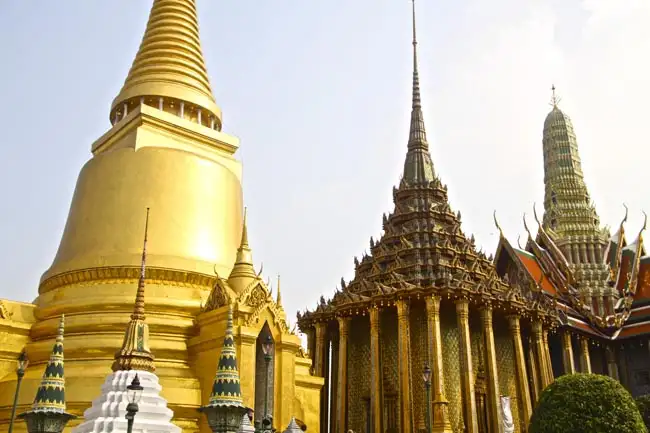
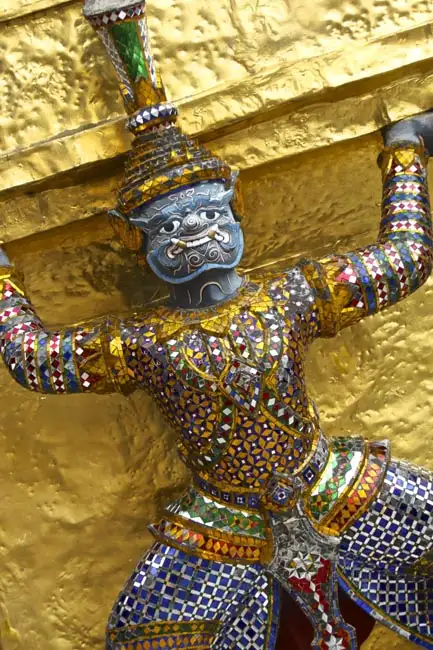
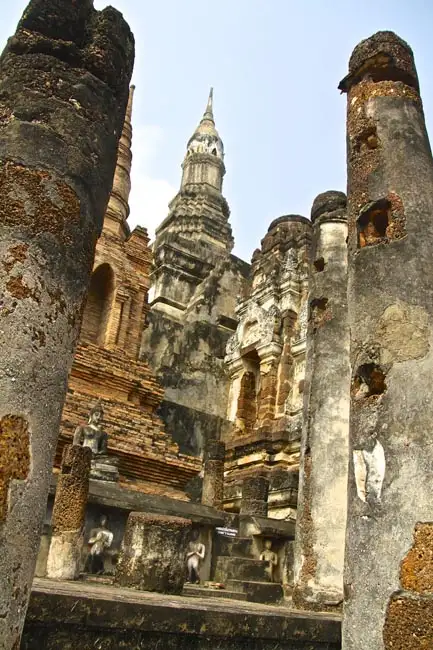
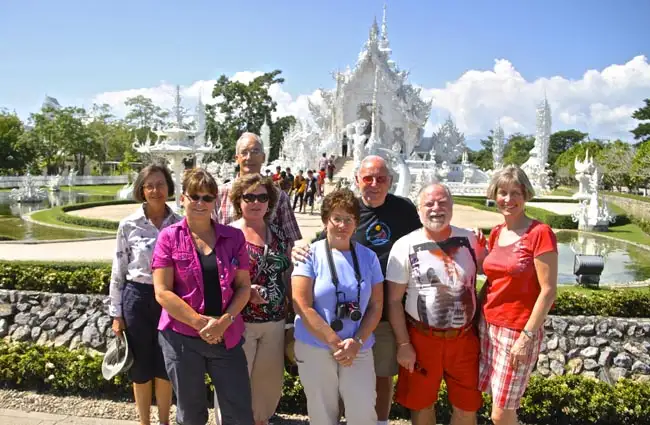
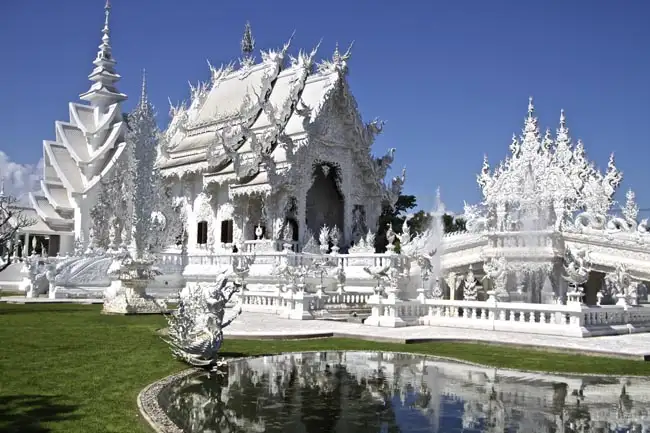
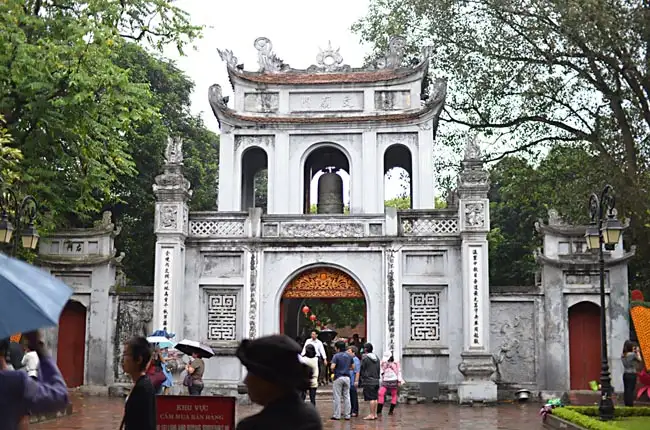
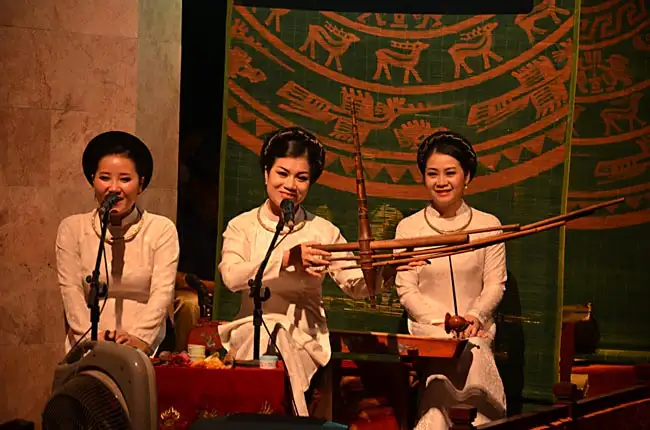
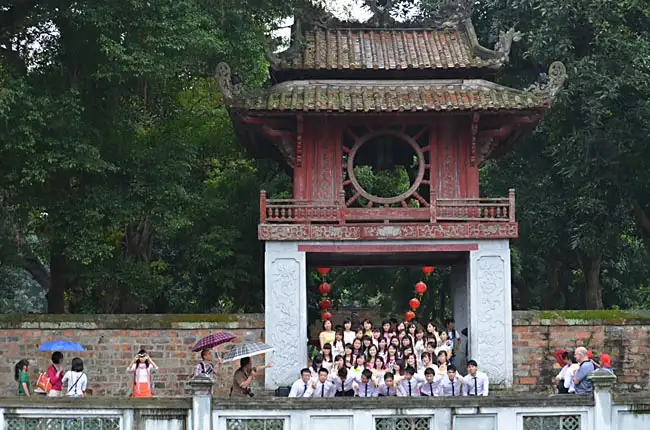
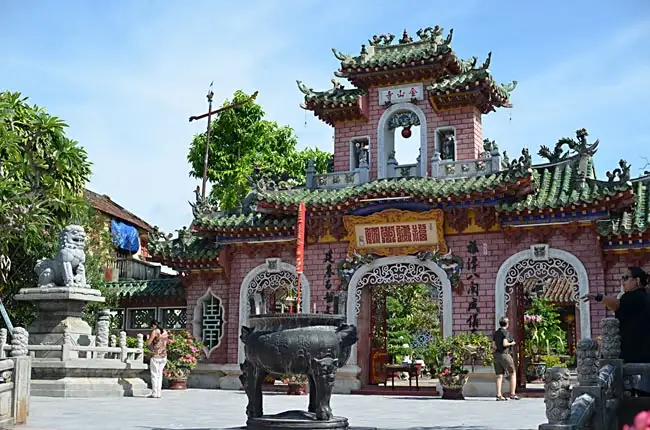
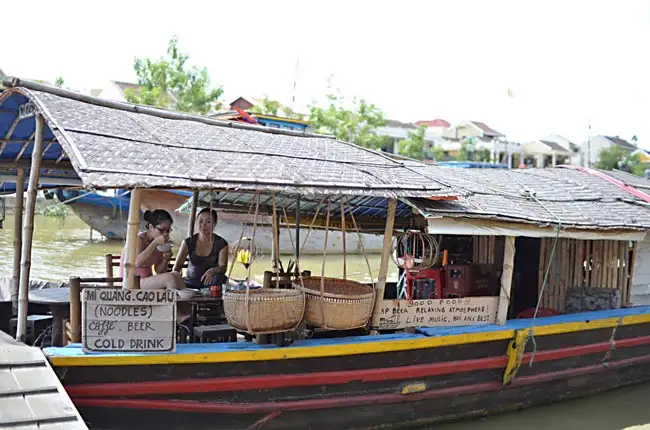
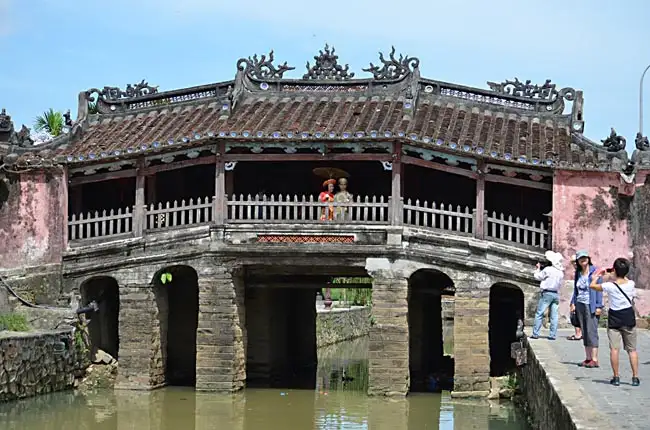
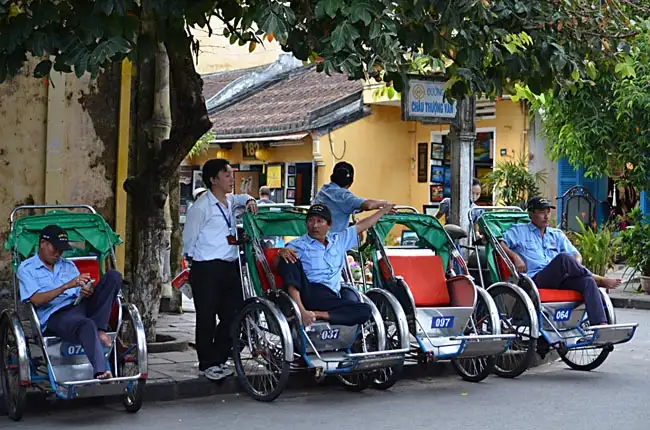
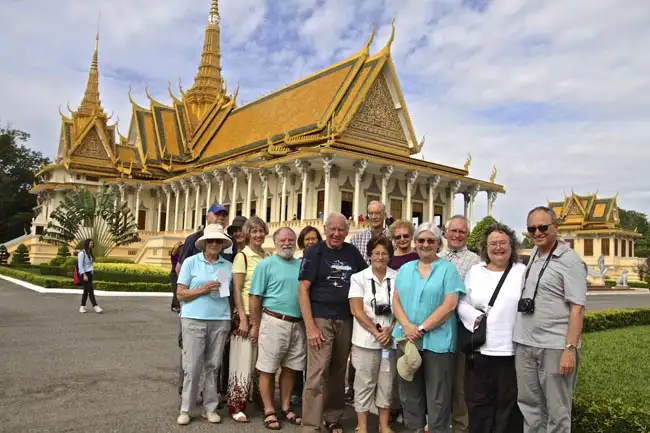
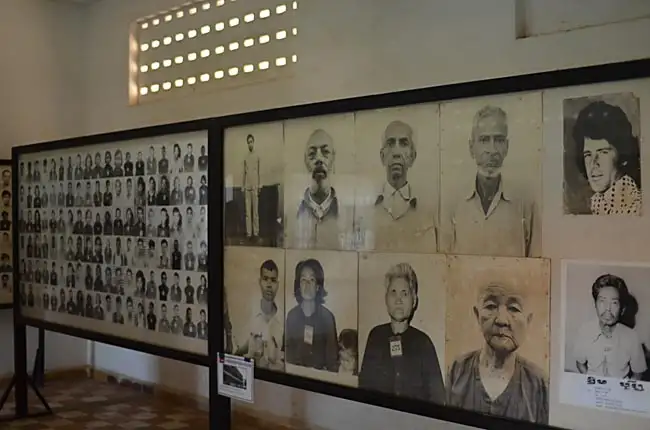
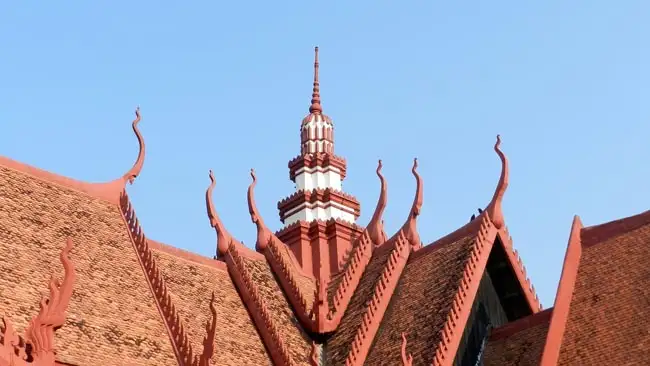
Excellent
Overall Rating
4.6
Extend Your Trip
This tour is part of a series that can be upgraded to make for a longer trip.
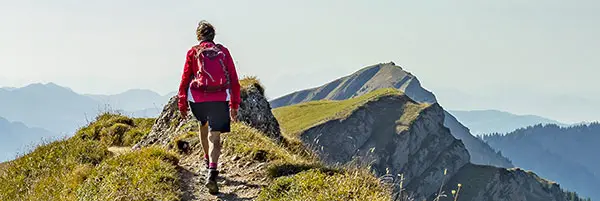
Fast and easy
Book this tour
Book your unforgettable adventure today! For any questions or advice, don't hesitate to contact us.
Have questions?
Contact Us
1-800-665-3998
- Final payment is due 90 days prior to departure.
- A non-refundable $500 USD deposit is payable at the time of booking
- Optional Single Supplement: $1620 USD (number of singles limited).
This tour may require a mandatory single supplement charge of $820 USD if you join our share program and we are unable to pair you. - Transferring to another tour or tour date is only permissible outside of 120 days prior to departure and is subject to a $100 USD change fee. (Read our cancellation policy for more info.)
Prices below are per person, twin-sharing costs in US Dollars (USD). Pricing does not include airfare to/from the tour and any applicable taxes. Get general information on flights to/from the tour.
Choose your departure date:
Frequently Asked Questions
- What is the maximum number of participants on a trip?Most of our tours carry a maximum of 18 participants; some tours (ie hiking tours) top out at 16. In the event that we do not achieve our minimum complement by our 90-day deadline, we may offer group members the option of paying a "small-group surcharge" as an alternative to cancellation. If all group members agree, we will confirm the trip at existing numbers; this surcharge is refundable in the event that we ultimately achieve our regular minimum. If the small group surcharge is not accepted, we will offer a refund of your deposit or a different trip of your choice.
- Can I extend my tour either at the beginning or end? What about stopovers?Yes, you can extend your tour either at the beginning or the end and we can book accommodation in our tour hotel. Stopovers are often permitted, depending on air routing. Stopovers usually carry a "stopover" fee levied by the airline.
- How do I make a reservation? How and when do I pay?The easiest way to make a reservation is via our website; during office hours, you are also more than welcome to contact us by telephone.
A non-refundable deposit is payable at the time of booking; if a reservation is made within 90 days, full payment is required. Some trips require a larger deposit. If international airline bookings require a non-refundable payment in order to secure space or the lowest available fare, we will require an increase in deposit equal to the cost of the ticket(s).
Early enrolment is always encouraged as group size is limited and some trips require greater preparation time.
Once we have received your deposit, we will confirm your space and send you a confirmation package containing your trip itinerary, any visa/travel permit related documents, invoice, clothing and equipment recommendations, general information on your destination(s), and forms for you to complete, sign and return to us. Your air e-tickets (if applicable), final hotel list, final trip itinerary, and instructions on how to join your tour, will be sent approximately 2-3 weeks prior to departure. - What about cancellations, refunds, and transfers?Please review our cancellation policy page for details.
- I am a single who prefers my own room. What is a single supplement?All of our tours have a single supplement for those who want to be guaranteed their own room at each location.
This supplement is a reflection of the fact that most hotels around the world do not discount the regular twin-share rate for a room by 50% for only one person occupying a room. Most hotels will give a break on the price, but usually in the range of 25-30% of the twin-share rate. This difference, multiplied by each night, amounts to the single supplement.
The conventional amount can also vary from country to country and some destinations are more expensive than others for single occupancy. In order to be "single friendly," the supplements we apply are not a profit centre for us and we do our best to keep them as reasonable as possible.
On most tours we limit the number of singles available, not to be punitive, but rather because many hotels allow for only a limited number of singles; some smaller hotels at remote locations also have a limited number of single rooms available.
Please note that most single rooms around the world are smaller than twin-share rooms and will likely have only one bed. - Do you have a shared accommodation program?Yes! If you are single traveller and are willing to share, we will do our best to pair you with a same-gender roommate. On most of our tours, if we fail to pair you, we will absorb the single supplement fee and you will default to a single room at no extra charge. At some destinations, however, where single rooms are not significantly discounted, or not at all, we may apply a "mandatory" single in the event that we cannot find you a share partner. This is usually 50% of the usual supplement, but can be as much as 100%. If applicable, this proviso will be noted on each tour page on this website, on your invoice, and in our tour date/price book (available for download under "Resources").
Please choose a departure date!
